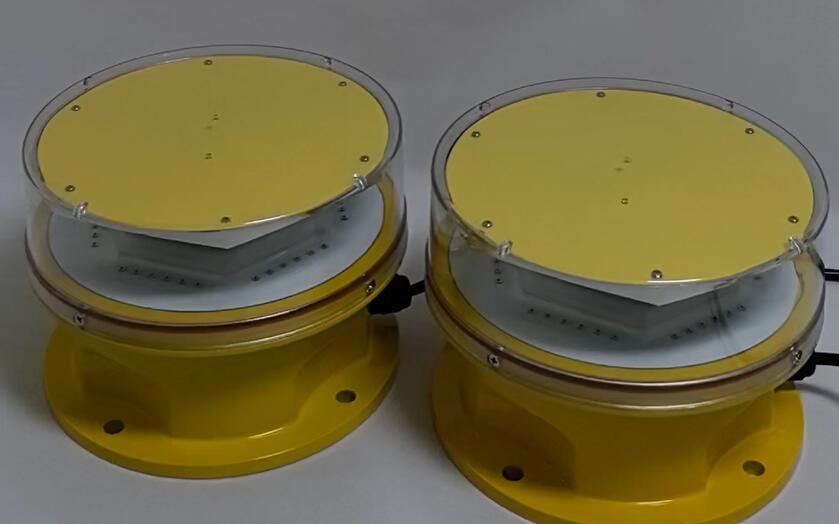
Airfield obstruction lights play a critical role in the aviation industry, ensuring the safety of aircraft, crew, and passengers. These specialized lights are designed to mark obstacles around airfields, such as buildings, antennas, towers, and other potential hazards, to prevent collisions and guide pilots during flight operations. With the growing complexity of modern airfields and the increasing volume of air traffic, the significance of airfield obstruction lights has never been greater. This article explores their function, technology, regulations, and future advancements.
The Purpose of Airfield Obstruction Lights
Airfield obstruction lights serve a straightforward yet vital purpose: to alert pilots of potential hazards in and around the airfield environment. Obstacles like tall structures, construction cranes, and terrain features pose risks, especially during takeoff, landing, and low-altitude flight. These lights act as visual markers, enabling pilots to identify and avoid such obstacles, even in adverse weather conditions or during nighttime operations.
By providing a clear and consistent visual cue, airfield obstruction lights reduce the risk of accidents and enhance overall operational safety. They also ensure compliance with international aviation standards, making them a mandatory component of any airfield infrastructure.
Types of Airfield Obstruction Lights
There are various types of airfield obstruction lights, categorized by intensity and purpose. Each type serves specific needs depending on the size, height, and location of the obstacle.
Low-Intensity Lights
Typically used for obstacles less than 45 meters in height.
Emit a steady red light visible from a short distance.
Commonly installed on buildings and small structures near the airfield perimeter.
Medium-Intensity Lights
Used for obstacles between 45 and 150 meters in height.
Can emit red or white light, with flashing patterns to enhance visibility.
Often found on telecommunications towers, construction cranes, and taller buildings.
High-Intensity Lights
Required for structures exceeding 150 meters in height.
Emit bright white light, often in a flashing pattern, to maximize visibility over long distances.
Typically installed on tall radio masts, wind turbines, and skyscrapers.
Technological Innovations in Airfield Obstruction Lights
Modern airfield obstruction lights have evolved significantly, thanks to advancements in lighting technology. Some of the key innovations include:

LED Technology
LED-based obstruction lights are energy-efficient, durable, and require minimal maintenance.
They offer consistent brightness and can operate under extreme weather conditions.
Smart Lighting Systems
Integration of sensors and wireless controls allows for automated operation based on environmental conditions.
For example, lights can adjust intensity depending on ambient light levels or activate only when an aircraft is detected nearby.
Solar-Powered Solutions
Solar-powered airfield obstruction lights are gaining popularity, especially in remote locations.
They reduce reliance on electrical grids, making them eco-friendly and cost-effective.
Synchronization and Pattern Customization
| Airfield Obstruction Lights | 5T66 |
Advanced systems enable synchronized flashing patterns across multiple lights, improving visibility and reducing visual confusion for pilots.
Regulatory Compliance
The installation and operation of airfield obstruction lights are governed by international aviation authorities, including the International Civil Aviation Organization (ICAO) and the Federal Aviation Administration (FAA). These organizations set standards for light intensity, color, placement, and flashing patterns to ensure uniformity and effectiveness.
Key regulations include:
Color Standards: Red for low-intensity lights and red/white for medium and high-intensity lights.
Flash Rates: Defined flashing intervals to avoid distraction and ensure recognition.
Maintenance Requirements: Regular inspections and functional checks to ensure lights remain operational.
Failure to comply with these standards can result in penalties and pose significant safety risks.
Challenges and Solutions
Despite their critical importance, airfield obstruction lights face several challenges:
Environmental Impact
Light pollution can disturb nearby communities and wildlife.
Solution: Use directional lighting and intensity control to minimize unwanted light dispersion.
Maintenance in Remote Areas
Accessing and maintaining lights on tall structures or in remote locations can be challenging.
Solution: Employ durable, long-lasting LED lights and remote monitoring systems to reduce maintenance frequency.
Weather-Related Damage
Extreme weather conditions can impair light functionality.
Solution: Use weather-resistant materials and robust designs to ensure reliability.
Future Trends
The future of airfield obstruction lights lies in further innovation and integration with smart technologies. Some emerging trends include:
AI-Powered Monitoring: Advanced systems that predict maintenance needs and detect faults in real-time.
Drone-Based Inspection: Use of drones to inspect and repair lights on tall structures, improving safety and efficiency.
Advanced Materials: Development of lightweight, durable materials that can withstand harsh environmental conditions.
Integration with Air Traffic Control (ATC): Real-time data sharing between obstruction lights and ATC systems to enhance situational awareness for pilots and controllers.
Conclusion
Airfield obstruction lights are indispensable for ensuring aviation safety. Their ability to mark hazards, guide pilots, and comply with stringent regulations underscores their importance in the aviation ecosystem. As technology continues to advance, these lights will become even more efficient, reliable, and environmentally friendly. By investing in modern solutions and adhering to international standards, the aviation industry can continue to prioritize safety while embracing innovation.
In an era where air travel is a cornerstone of global connectivity, airfield obstruction lights remain a small yet vital component of a much larger safety framework.